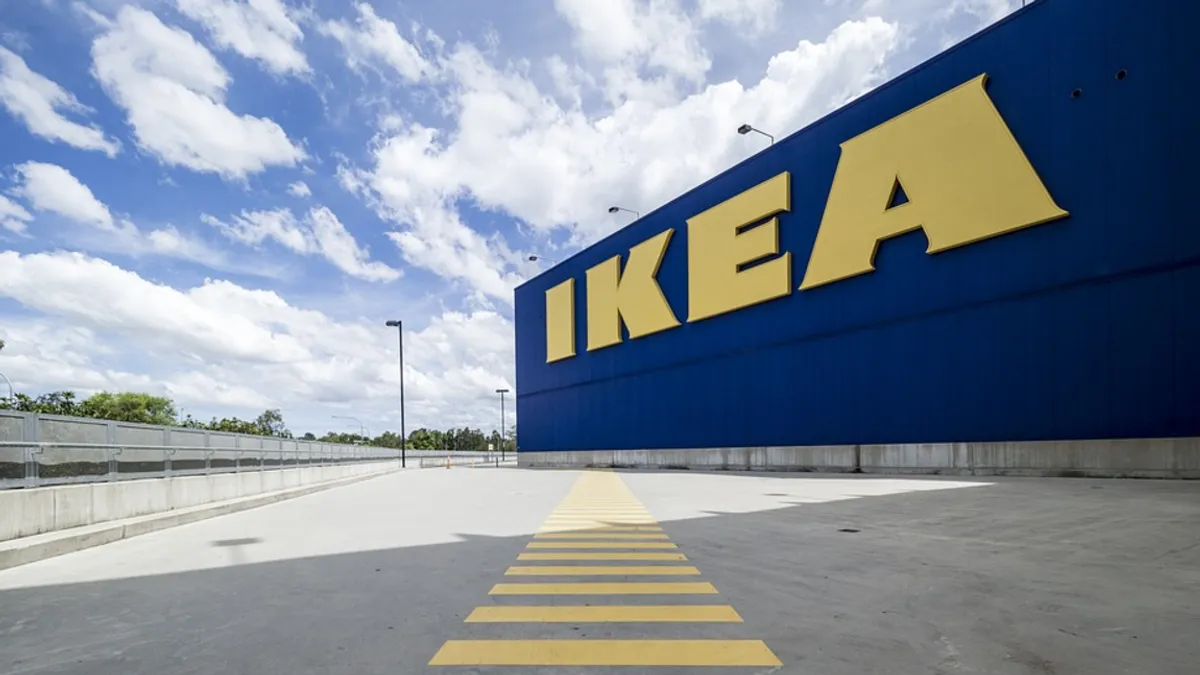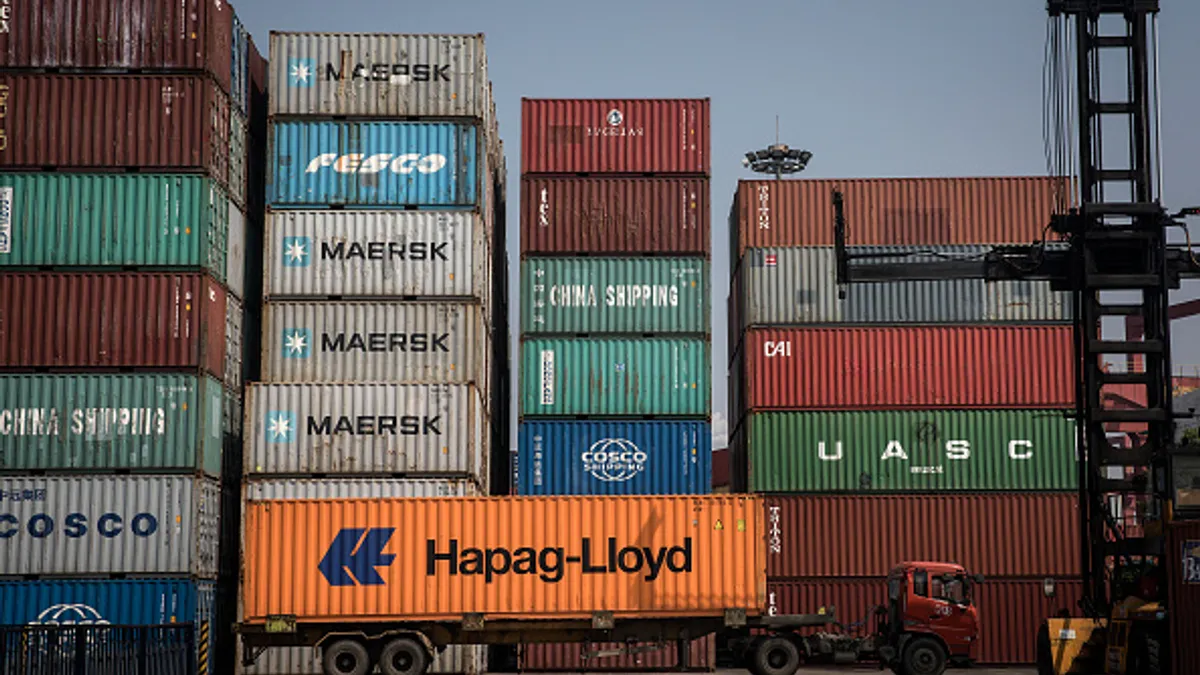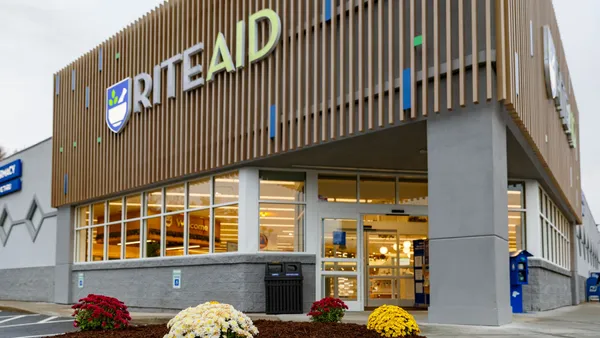Ikea has big plans to lure urban millennials to its stores.
The Swedish retailer recently announced it will open around 30 urban store concepts over the next two years. These stores will differ from the big-box warehouses many have come to associate with the company. Instead, they will have a more experiential concept, creating mock ups of rooms within the store to showcase products.
The company has already begun rolling out the program in the U.S. with a greater focus on e-commerce experience and service offerings. Among these efforts are Ikea’s partnership with TaskRabbit's At-Home Assembly service, which launched earlier this year.
Ikea's parent, The Ingka Group, also announced Wednesday in a post on its website by Lars Petersson, country manager for Ikea Retail U.S., that restructuring efforts would also require some jobs be "relocated, changed or removed and that 7,500 jobs may be redundant." The company added it believes the number of layoffs in the U.S. would be fewer than 75. Petersson also anticipates the efforts will lead to the creation of 11,500 new jobs.
As Ikea refocuses its business plan, the discussion forum on RetailWire asked its BrainTrust panel of retail experts the following questions:
-
Do you see Ikea’s shift to smaller, city-center stores and heightened focus on online delivery as smart moves?
-
What should the company retain from the traditional IKEA business model?
Here are eight of the most insightful comments from the discussion. Comments have been edited by Retail Dive for length and clarity.
1. A millennial move
Cathy Hotka, Principal, Cathy Hotka & Associates: Ikea’s core demographic is younger people who are setting up households, many of whom are living in cities and don’t have access to large vehicles to move heavy merchandise, which is why many have turned to Wayfair and other online sellers. Ikea’s former policy of not shipping smaller items has to evolve to serve this population and retain market share.
2. Retailers should 'disrupt themselves'
Mark Ryski, Founder, CEO & Author, HeadCount Corporation: Even the most successful retailers need to disrupt themselves occasionally, and Ikea is a good example. The move to smaller, city-center stores and focusing on online makes good sense. Ikea’s product offering is very compatible with the urban dweller, so smaller stores where these shoppers live makes good sense.
Also, enhancing delivery and service offerings like set-up nicely fits with what consumers are demanding. All-in-all, thoughtful, smart moves by a smart, successful retailer.
3. It's time to evolve
Neil Saunders, Managing Director, GlobalData: Ikea’s model has remained unchanged for many years. However, over that time the way people shop has evolved. Massive stores, which are expensive to run, no longer pull in crowds as they once did — mainly because of the rise in online shopping. This has reduced their profitability and efficiency.
We did a lot of work for Ikea on urban stores and all the research evidence points to the fact that they will help Ikea boost market share among core audiences such as urban millennials.
New York City is a prime example. The Brooklyn store is successful but it does not pull in many customers from Manhattan. If Ikea wants to grow share on the island, it needs to have a smaller urban presence where it can showcase some of its range and offer services like collect from store.
4. Can stores keep their iconic look?
Georganne Bender, Partner, Kizer & Bender Speaking: We were once approached by an independent retailer who had a very successful, quirky store. But he wanted a slick, clean layout that was opposite of what he had. We passed because my gut feeling was the move would alienate his clientele. Another company took on the redesign and the store suffered.
This is how I first read the article on Ikea’s plans; its stores are so iconic that a complete change to the format would be startling to shoppers. It’s interesting that Ikea has said its "websites have focused too much on driving store traffic rather than online purchases." Well, yeah! People go to Ikea expecting to load up.
But that’s the suburbs, a smaller footprint in urban markets makes sense. People who live in cities need a different kind of store. Ikea vignettes are easy to shop — that plus set-up and delivery options, so what’s not to love?
5. Large format shopping is a 'slog'
Zel Bianco, President, Founder and CEO, Interactive Edge: Getting closer to where the typical consumer of Ikea products live makes sense. Having rooms set up to see how things fit together also makes sense. Getting through a shopping experience in their large format was indeed a slog and may still be necessary when your kids first move into their own place, but for fill-ins and smaller purchases, the new in-town format will work.
Seems they have thought through the major changes and are in front of them in a very well organized way. Wouldn’t expect anything less from the management of Ikea.
6. It's all in the experience
Min-Jee Hwang, Director of Marketing, Wiser Solutions, Inc.: This appears to be a solid move for Ikea, especially as the way consumers shop has evolved over the years. We’ve seen a desire for brick-and-mortar stores to provide an experience, and the proposed Ikea layout should fit right into that. Being able to view furniture in-store and then have orders delivered to your home could also help.
7. Delivery and assembly serves are a welcome change
Steve Montgomery, President, b2b Solutions, LLC: Retailers must adapt to the changing needs of their customers. Ikea is no exception. Each of the changes being made is very logical given the changes in the marketplace. I believe delivery and assembly will be especially welcomed by all their customers whether in the new urban location or the suburbs. Customers will welcome not having to cart the items home and then try and figure out where out where each piece, screw, and tab goes.
8. Evolve or die
Ken Morris, Principal, Boston Retail Partners: Retail is an extremely competitive industry that has arrived at a state where retailers need to evolve or die. Ikea is evolving by experimenting with new formats and shopping and delivery options for consumers. I wouldn’t classify this as radical transformation as they are tweaking their proven concepts by adding urban locations, assembly, delivery and e-commerce.
As they tweak their retail formats, they should retain the traditional iconic core products and services that customers know and love: Frakta Shopping bag, Poäng chair, Swedish meatballs and lingonberry jam while adding accessibility, delivery and relief from the annoying assembly nightmare that sometimes exists.























